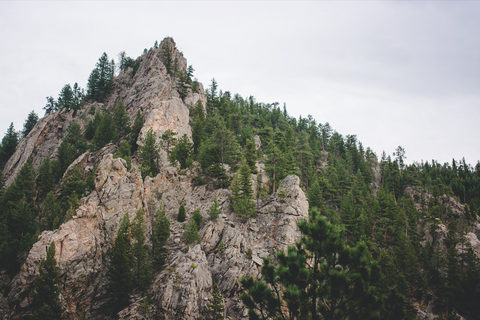Can you Camp Anywhere in a National Forest?
What's better than waking up to the sweet chirps of birdsong and the delicate sparkle of alpine water? Doing it for free. With over 200 million acres of forest land in the United States, there's no shortage of camping in nature. Free camping, or dispersed camping, is an excellent option for campers who don't want a developed campground. The national forests are one of the best public land options for free camping, as the rules are more lenient. But the question remains: can you camp anywhere in a national forest? Read on to find out.
Can You Camp Anywhere in a National Forest?

Can you camp anywhere in a national forest? The short answer is: not exactly. You can camp in most national forests, but some forest areas are restricted to protect the land. If an area is restricted, you'll see posted signs informing campers to stay out. And if you are camping for free, there are rules, regulations, and ethical concerns to being a respectful camper in a national forest.
Legal Considerations for Camping in a National Forest
Before you go camping, familiarize yourself with the rules for being a good camper. Some national forest areas have permit requirements or other restrictions. Here are some basic regulations set by the National Forest Service to help you be a great camper.
Where to Camp
Some national forests are home to developed campgrounds. Developed campgrounds are usually fee-based and open for reservations. These campgrounds often provide amenities like flush toilets, picnic tables, and fire rings.
Most national forests are open to free camping. Dispersed camping is a great option for campers who want to save money. You can disperse camp almost anywhere in a national forest. Find a spot you like, pull in, and set up camp. Make sure you stay at least a mile from developed campgrounds, 100 feet away from a water source, and 150 feet from roads.
Rules and Regulations
- Minimize damage. Whenever possible, stay on the roads and try to pick an established campsite. They're usually marked by a clearing and often include a fire ring.
- Be prepared. Free campsites don't come with amenities, so bring your own water, firewood, trash disposal, and bathroom tools. Dispose of feces at least 100 feet from your campsite or any water source; dig a six-inch hole and fill it with dirt.
- Build smart fires. Check fire restrictions in your area before you leave. Whenever possible, use existing fire rings instead of creating one. You can collect dead and down firewood, but don't cut any live trees. Always put your fire out. If there's no fire ring, opt for a camping stove to cook food.
- Limit your camping. Most national forests limit camping to 14-days within 30 days. If you need to stay longer, find another camping spot.
- If you have any four-legged friends with you, keep them on a leash.
Ethical Considerations for Camping in a National Forest
Besides the legal regulations, follow the seven Leave No Trace principles to be a good camper.
Two Great Places to Camp in a National Forest
These are two of the best places in the United States to camp for free.
San Juan National Forest, Colorado

The San Juan National Forest is one of the most pristine forests in the western United States. It features almost two million acres of trails, climbing, lakes, rivers, and historic mining claims. The colorful streaks and rugged mountain peaks make the San Juans a unique experience.
White Mountain National Forest, New Hampshire

The White Mountain National Forest is the premier outdoor destination in the northeastern United States. Spanning almost a million acres, it boasts some of the most beautiful scenery in the country. It's a favorite destination for campers, hikers, anglers, hunters, and photographers. The lush scenery and tranquil quiet make the White Mountains a gem to behold.
Camping for free is a great way to commune with nature and enjoy our public lands. If you've ever asked the question, can you camp anywhere in a national forest? You're on the right path. We're here to clear things up.
